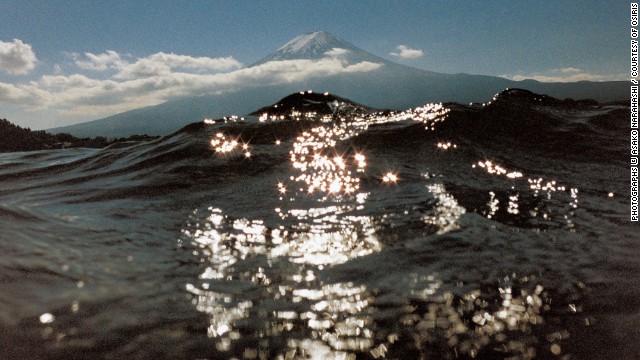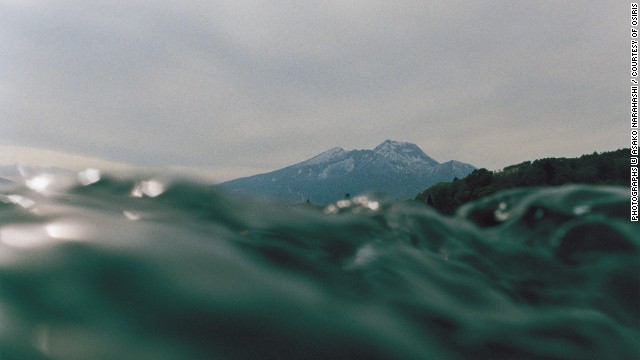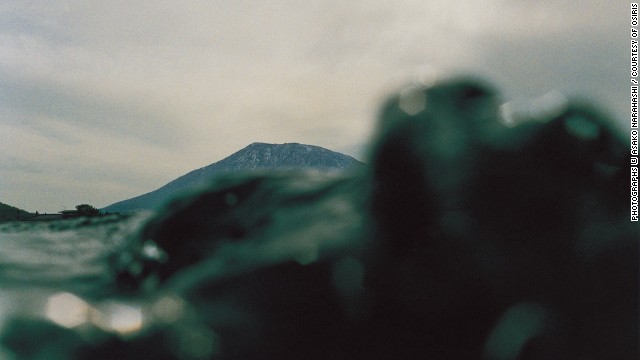

 Asako Narahashi's "Ever After"Nojiriko, 2011Evocative, unusual and perhaps a little disquieting, Asako Narahashi's photos of Japan can inspire a variety of reactions.
Asako Narahashi's "Ever After"Nojiriko, 2011Evocative, unusual and perhaps a little disquieting, Asako Narahashi's photos of Japan can inspire a variety of reactions.
From coasts to rivers and
lakesides, her seemingly semi-submerged photographs frame water and
land as if taken by a castaway catching sight of shore, presenting a
unique perspective of the country.
Since 2001 Narahashi has
been using an all-weather film camera to take the series of photos that
were first grouped under the title "Half Awake and Half Asleep in the
Water."
Using an all-weather film
camera she has traveled across Japan in all seasons, wearing a bathing
suit in summer or fishing waders in winter months, and sometime taking
to a boat or canoe to capture the shots.
When I first started shooting this series, I imagined shooting all the way around Japan from the sea.
Asako Narahashi
Asako Narahashi
"After much trial and
error, I realized that it was better to give a sense of the water in the
foreground, and gradually I took more photographs positioned as though
the lens was put partially in the water," Narahashi told CNN via email.
"When I first started
shooting this series, I imagined shooting all the way around Japan from
the sea. But as I progressed, I felt this framework is not necessary for
me, so I shoot both in Japan and other places."
Her latest book "Ever After"
is a continuation of that first series and saw travel across the world
shooting in new locations. But her singular views of Japan are perhaps
the most captivating.
Kannawa, 2011. © Asako Narahashi / Courtesy of Osiris
The commingling of the natural and the man-made is a consistent theme for Narahashi.
"(In Japan) nature exists
within reach of people," she said. "You'll find old and new buildings
or billboards and other artificial things randomly mixed along with
nature. The natural and man-made are constructing landscapes while
permeating each other."
But as the tsunami of
2011 illustrated to devastating effect, the natural and human worlds do
not exist in harmony. The catastrophe also had a significant impact on
Narahashi and her photography.
"After seeing the images
of the 3/11 tsunami, knowing the scope of the disaster, it was a time
when I questioned whether I could continue to shoot in the same manner
as before," she said.
"Since I began the
series I had been thinking that both 'fear' and 'consolation' are in my
photographs in the state of being suspended in mid-air, unable to go up
or down. But after 3/11, I felt like the pendulum had swung to the
'fear' side.
"The only answer I could
find was to continue to take photographs. In last few years, I'm
continuing to shoot in the sea but I have more occasions to shoot in
rivers and lakes in (the) last few years than before."

No comments:
Post a Comment